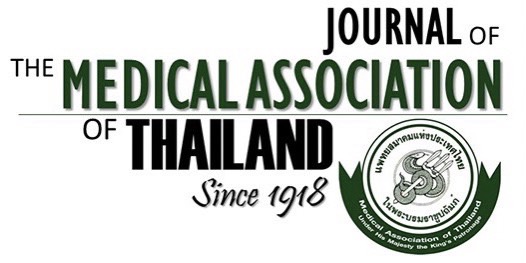Serial MR Imaging of Small Arterially-Enhancing Liver Lesions in Patients with Chronic Liver Disease
Pornpim Korpraphong MD*, John R Leyendecker MD**, Charles F Hildebolt PhD***, Vamsri Narra MD***, Klongtae Ty Bae PhD****, Jeffrey J Brown MD***
Affiliation : * Department of Radiology, Faculty of Medicine Siriraj Hospital, Mahidol University, Bangkok, Thailand ** Department of Radiology, Wake Forest School of Medicine, North Carolina, USA *** Mallinckrodt Institute of Radiology, Washington University School of Medicine, St. Louis, USA **** Department of Radiology, University of Pittsburgh, Pittsburgh, USA
Objective : To determine the significance of small arterially-enhancing liver lesions seen with magnetic
resonance imaging (MRI) in patients with chronic liver disease.
Material and Method: Our institutional review board approved this retrospective study, without requiring
informed consent. Over a two-year period, 258 consecutive patients with cirrhosis or chronic hepatitis
underwent multiphase three-dimensional, gadolinium-enhanced, breath-hold gradient-echo MRI. From this
group, 29 patients underwent at least one follow-up MR study. When a small (< 20 mm) arterially-enhancing
lesion was detected, the maximum diameter, shape, signal intensities (T1-weighted and T2-weighted), and
pattern of enhancement were evaluated to assess the associations between the imaging appearance on initial
MR exam and subsequent behavior on follow-up imaging. Statistical testing was performed with JMP
Statistical Software (SAS, Inc., Cary, NC) and StatXact 7 Statistical Software for Exact Nonparmetric
Inference (Cytel, Inc. Cambride, MA).
Results : Sixty-five small (< 20 mm) arterially-enhancing lesions were detected in 29 patients. Ten of 65 lesions
(15%) in nine patients were subsequently proven to represent hepatocellular carcinoma (HCC), while the
remaining lesions either disappeared (46) or remained stable in size (9). Of the 10 lesions subsequently
proven to represent HCC, eight lesions converted from hypo- or isointense to hyperintense on subsequent
T2-weighted MRI (p < 0.001), seven lesions converted from hyper- or isointense to hypointense on subsequent
T1-weighted images (p < 0.001), seven lesions demonstrated growth on subsequent MRI exam (mean increase
in mean diameter = 1.4 cm), and five lesions subsequently developed rim enhancement that was not initially
present.
Conclusion : Small, arterially-enhancing lesions detected with MRI have a low likelihood of representing
HCC, and MRI follow-up of such lesions is a reasonable approach. Lesions that increase in size, convert to
hypointense on subsequent T1W images, convert to hyperintense in T2W images, or develop rim enhancement
on follow-up MRI images are concerning and should prompt consideration of intervention.
Keywords : Carcinoma, hepatocellular, Chronic disease, Liver diseases, Magnetic resonance imaging



